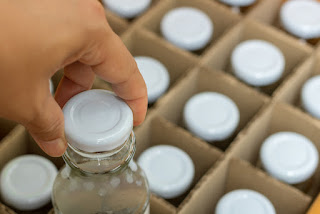From Protection to Promotion: The 3 Levels of Packaging
Your company’s packaging design plays a vital role in your marketing efforts.
Most American consumers (72%) agree that a product’s packaging design influences their purchasing decisions. Therefore, investing in quality design and materials can help customers easily recognize your products and distinguish them from the competition.
One way to focus your efforts when creating effective and memorable packaging is to think through the three levels of packaging: primary, secondary, and tertiary.
What to Know About the 3 Levels of Packaging
Read on to learn about each level and how it can help you promote and protect your products.
1. Primary Packaging
Primary packaging is the initial container that directly holds the product itself.
The fundamental goal of primary packaging is to preserve and protect the product, ensuring that it reaches the customer in its ideal condition. Examples include the can or bottle of a beverage, the bag containing potato chips, or the cardboard box that a blender comes in.
The primary packaging has multiple purposes: the design should identify the product, share best-before dates or nutritional facts, and help your product stand out on the shelves.
Additionally, it’s essential to consider the materials from which your primary packaging is made. In recent years, consumers have become increasingly interested in sustainability, with 83% of consumers considering it as a critical factor in their buying decisions
2. Secondary Packaging
Secondary packaging goes either outside of or around the primary packaging.
Secondary packaging serves a primarily functional purpose, protecting the primary packaging and the products inside while making transportation easier. Examples include the cardboard carton surrounding a 12-pack of soda cans or the plastic wrap around a case of water bottles.
Secondary packaging is a great way to create multi-packs, allowing customers to buy your products in bulk. Still, it can be more challenging to incorporate your personal branding or creative design elements. However, there are still ways you can make your secondary packaging eye-catching and recognizable: consider using a material that matches one of your brand colors or printing your company logo onto it.
3. Tertiary Packaging
Tertiary packaging is even more functionality-focused than secondary packaging, as it is the one type typically never seen by customers on the sales floor.
Tertiary packaging examples include crates, shipping containers, boxes, and plastic-wrapped pallets. Tertiary packaging does not provide opportunities for promotion, unlike primary and secondary packaging, so you should instead focus on ensuring that your tertiary packaging is made of sturdy materials that will help protect the quality of your products.
Understanding and optimizing the three levels of packaging enhances your marketing strategy and elevates your brand's presence in the marketplace. Visit our company's website today or contact us to learn more ways to bring success to your company through print.




Comments
Post a Comment